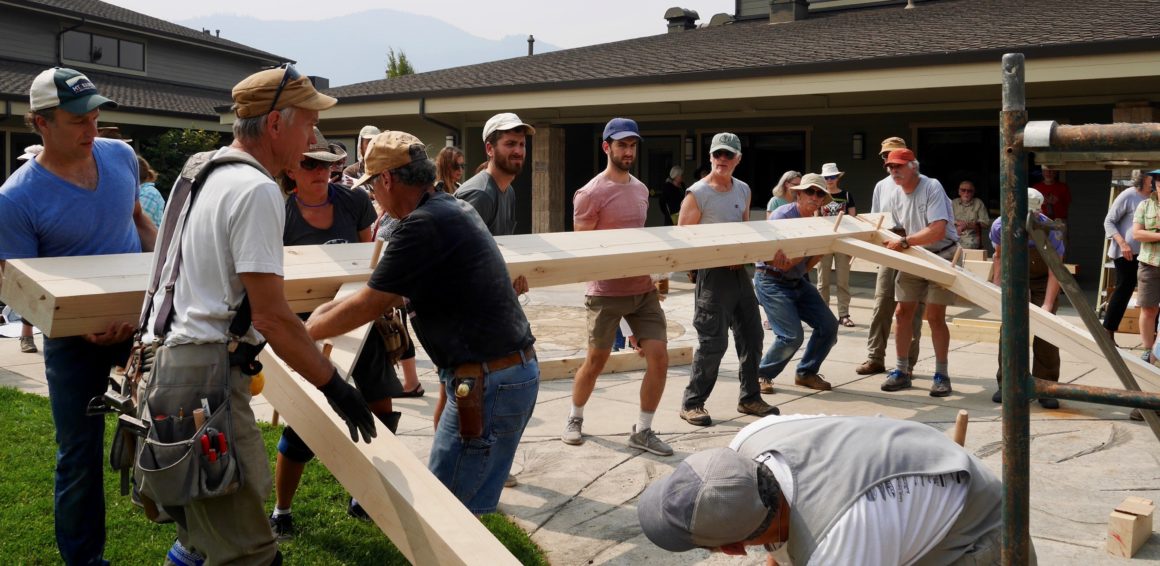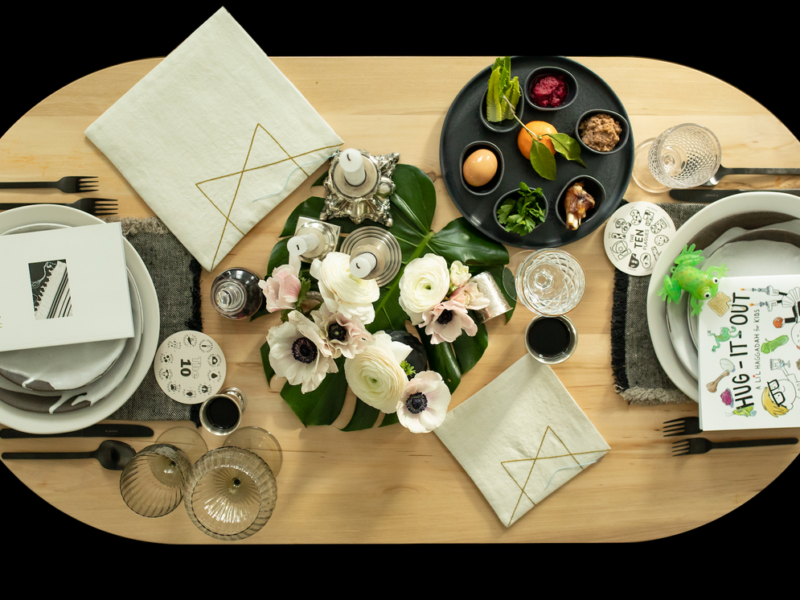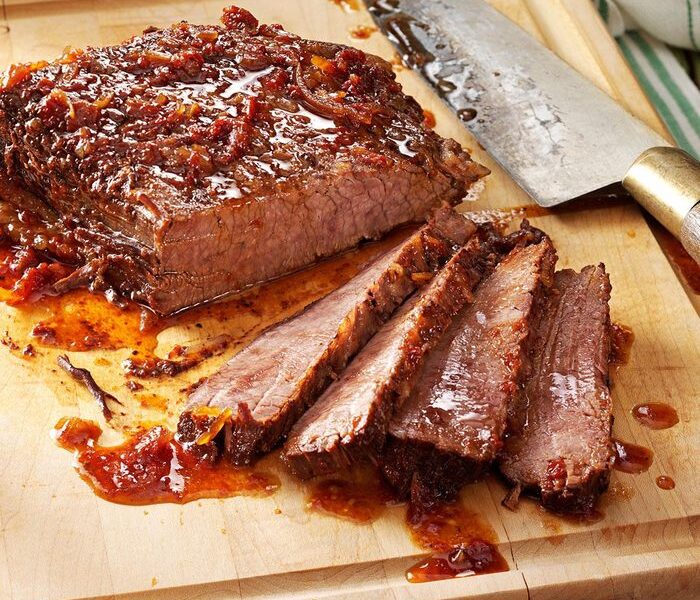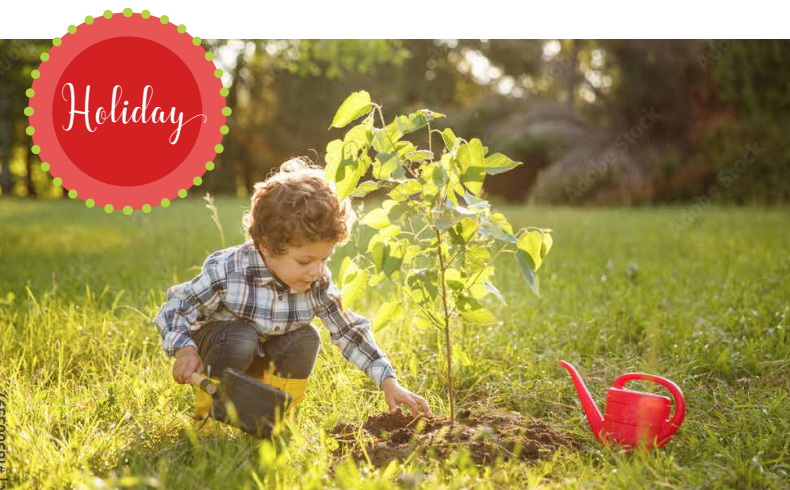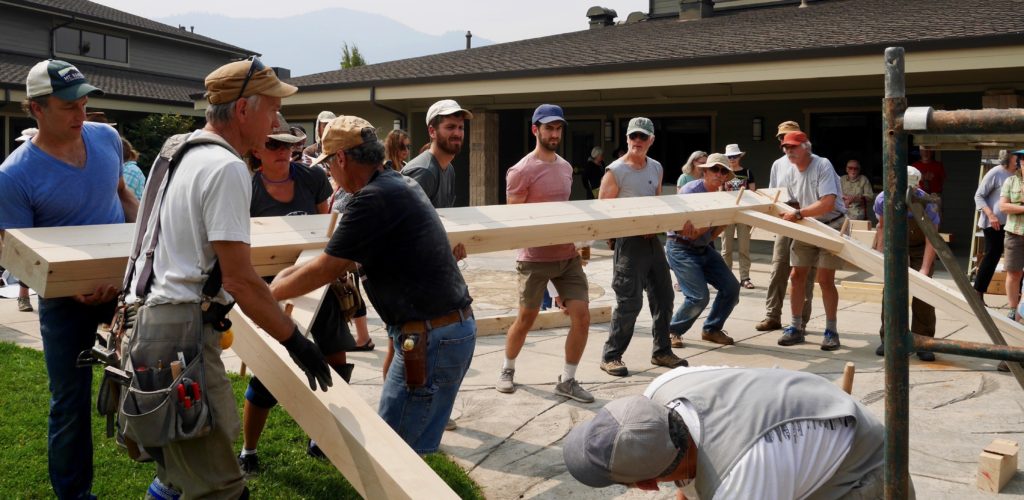
Photo: From left, Temple Emek Shalom Rabbi Joshua Boettiger (blue T-shirt) and master timber-framer Robert LaPorte (yellow hat) help congregants lift a post and beam section of the sukkah they built without nails.
By Mary Silva
The sukkah is designed to be both sturdy and vulnerable – offering shelter, but open to the sky and the elements as we spend time in it during the festival of Sukkot. The sukkahs we build today are reminders of our ancestors’ time following captivity in Egypt, when survival meant moving from place to place, building shelters from whatever materials they could find in their environment.
When the sukkah at Temple Emek Shalom in Ashland needed replacing, Rabbi Joshua Boettiger and his congregants decided to build the new sukkah themselves, while learning an ancient form of carpentry known as mortise and tenon joinery. They worked for a week with master timber-framer Robert LaPorte, of EcoNest in Ashland, who taught the method of building without the use of nails or metal fasteners.
Twelve people worked on the structure – Emek Shalom congregants and apprentice timber-framers from the community. Congregants stopped by during the week to lend a hand. On the day the sukkah was raised, nearly 50 people gathered to watch and help heft the first bent (a basic building block of a post and beam structure) into place.
“Something changes within a community when you do the work of actually building and creating sacred structures together, when you get callouses on your hands as you work towards a common goal,” says Rabbi Boettiger. “The process of imagining, designing and then literally fashioning the sukkah with our own hands was empowering and inspiring. This was the main reason we decided to build a special timber-frame sukkah as opposed to just building a more conventional one.”
In keeping with the tradition of using natural elements from nearby surroundings, the timber used for the sukkah was Port Orford cedar from Myrtle Point, OR. LaPorte describes it as “one of the strongest softwoods in the world,” and one known for its beauty and durability.
LaPorte’s lessons went beyond carpentry skills. He reminded the builders that when they undertake such a project, they are being built as much as they are building something. He taught participants to have a sense of gratitude to the trees they were learning from.
The group also incorporated a number of customs into the structure, says the rabbi, “such as writing prayers on the oak pegs before we drove them into the joints – so that our intentions are literally holding the sukkah together – and nailing a cedar bough onto the finished frame to reconnect it to the earth and to its origins.”
(Nails were used to attach the bough, since it wasn’t part of the construction, just an adornment.)


